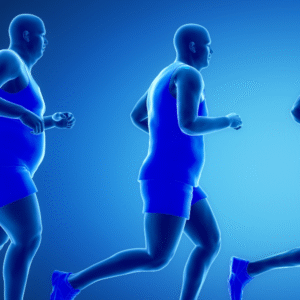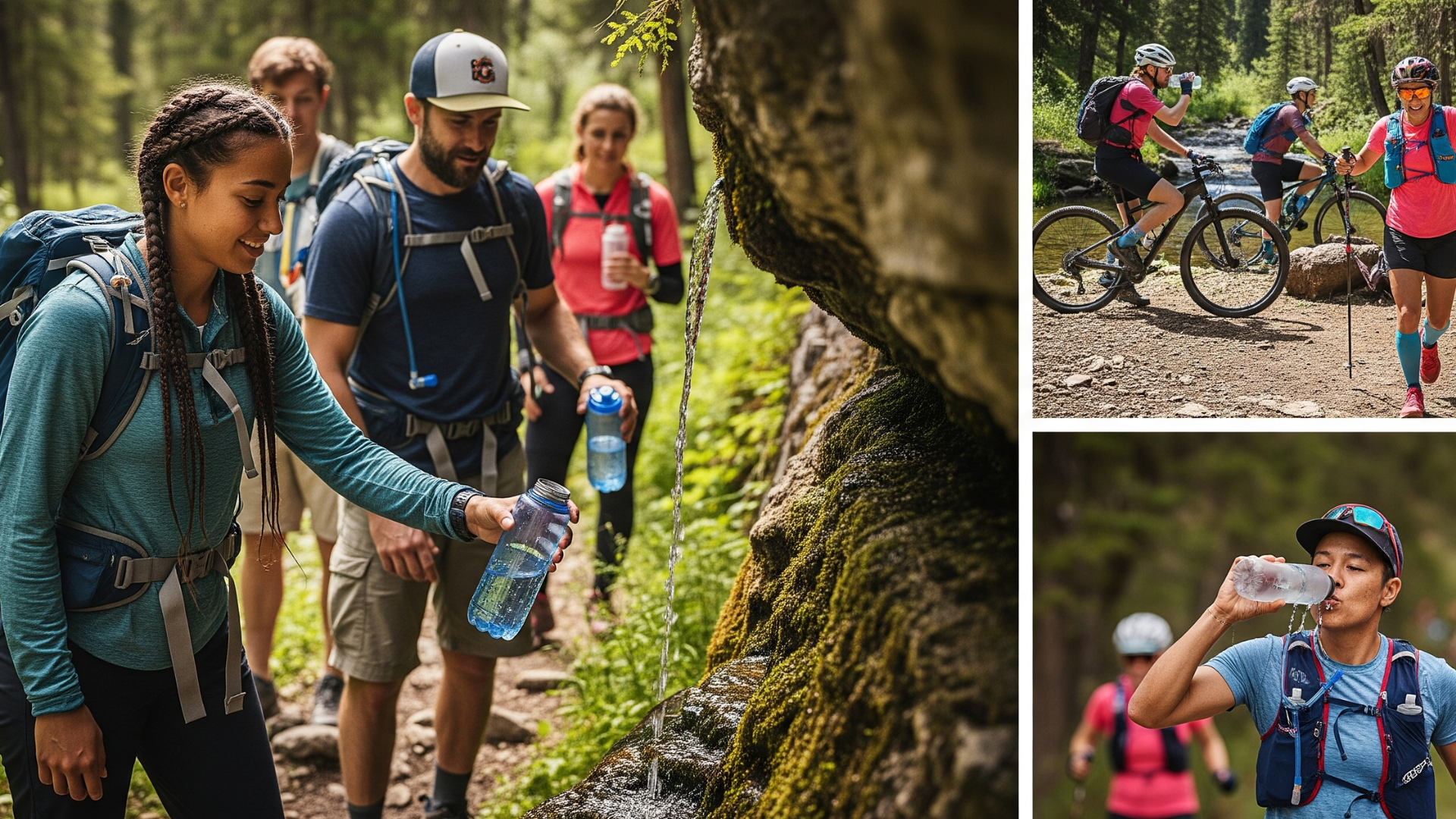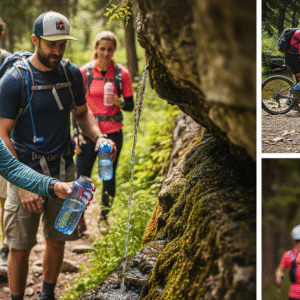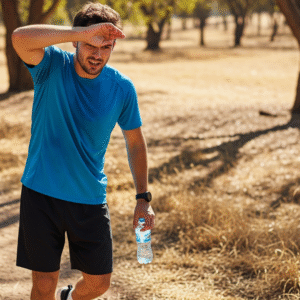Did you know that even mild dehydration can make you less smart and less able to do things physically? During outdoor activities like hiking or just enjoying nature, it’s important to stay hydrated.
When you go outside, you should think about how to stay hydrated. Get the right gear, keep track of how much water you drink, and know what to do if something goes wrong. Here are some great tips to help you spend more time outside.When you go outside, planning how to stay hydrated is important. You need the right gear, to keep track of how much water you drink, and know what to do in emergencies. Here, we share top tips to help you enjoy the outdoors more.
Key Main Points
- Plan how you will stay hydrated before you go outside.
- Pick out the best hydration gear for your needs.
- Watch how much water you drink while you’re outside.
- Learn what to do in cases of dehydration
- Drink plenty of water to keep your performance and safety up.
Why staying hydrated is important for outdoor activities
When you’re having fun outside, staying hydrated is important for your safety and how well you do. You lose water through sweat when you’re outside. You could get thirsty if you don’t drink enough.
How hydration and performance are linked scientifically
For better outdoor fun, you should know how being dehydrated affects your body. Getting enough water in your body helps it stay cool, move nutrients around, and get rid of waste. Lack of water can make you tired, give you headaches, and make you feel dizzy.
Chances of Getting Dehydrated Outside
If you don’t drink enough water, you could get heatstroke, which is very dangerous. Hiking, biking, and climbing in hot or high places all make you more likely to become dehydrated. If you want to know if you’re dehydrated, you should know that dark pee and not going to the toilet very often are signs.
Before, during, and after being outside, drink a lot of water to stay safe. Pay close attention to how your body feels and drink often. This keeps you from getting thirsty and improves your time outside.
Figuring Out How Much Water You Need
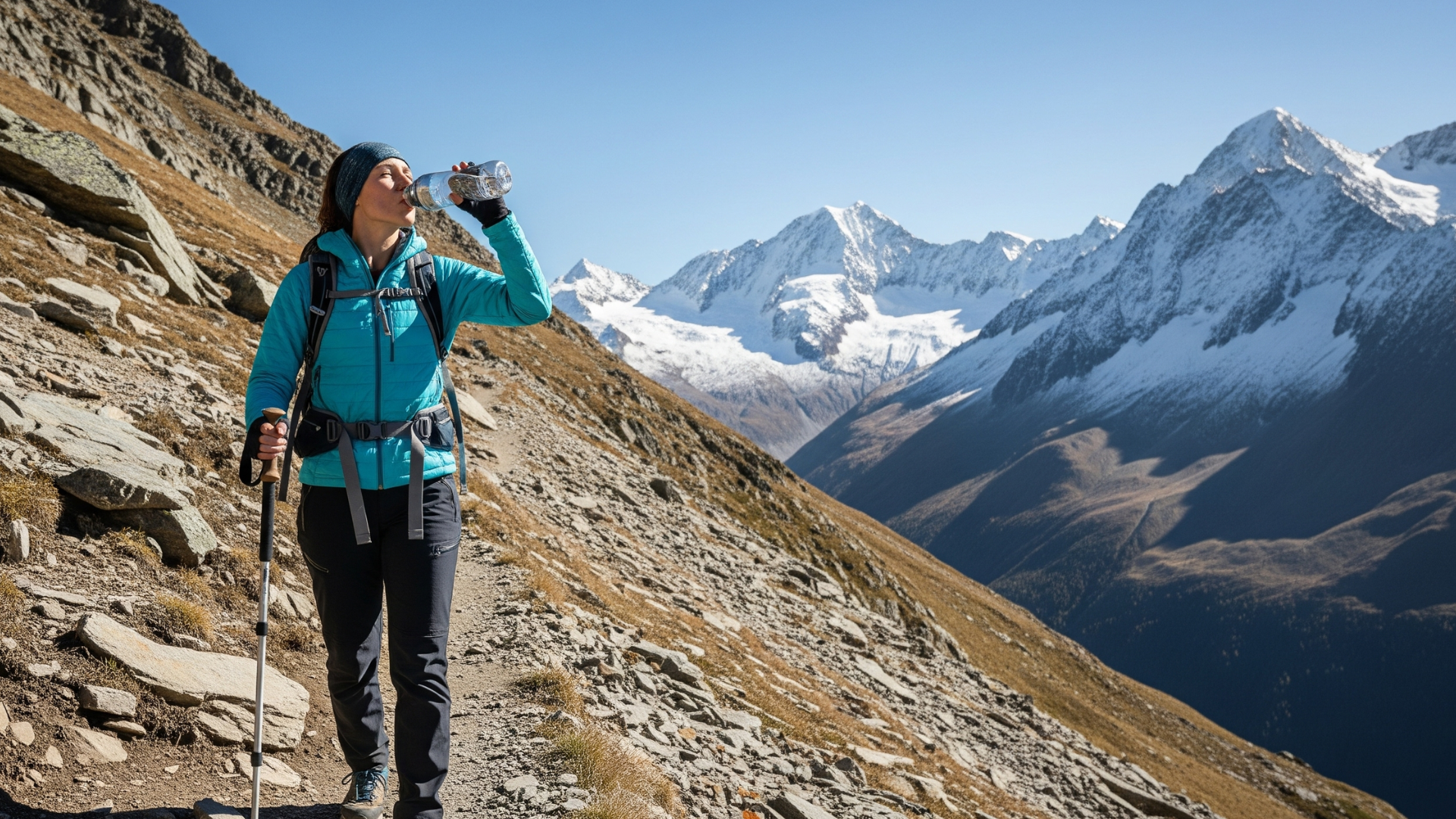
Your needs for water depend on where you are and how active you are. Think about these things to figure out how much water you need to stay hydrated.
How to Figure Out How Much Base Water You Need
Every day, most adults should drink eight glasses of water. Your needs may be different, though. How much water you need depends on your age, gender, weight, and health.
Making changes for Activity Level and Length of Time
You’ll need more water if you work outside or do hard things outside. Add 16 to 20 ounces of water to your daily amount for every hour that you are active. This keeps you hydrated and helps you replace the fluids you lose.
Things in the environment that affect hydration
Temperature, humidity, and altitude are all environmental factors that can affect how much water you drink. When it’s hot and humid, you sweat more and lose more water. When you’re up high, the air is drier, which makes you lose water faster.
To sum up, figuring out how much water you need is hard. Your personal factors and the place you’re in play a role. You can stay hydrated for your outdoor fun by changing how much water you drink.
Outdoor Enthusiasts Need to Plan Their Hydration
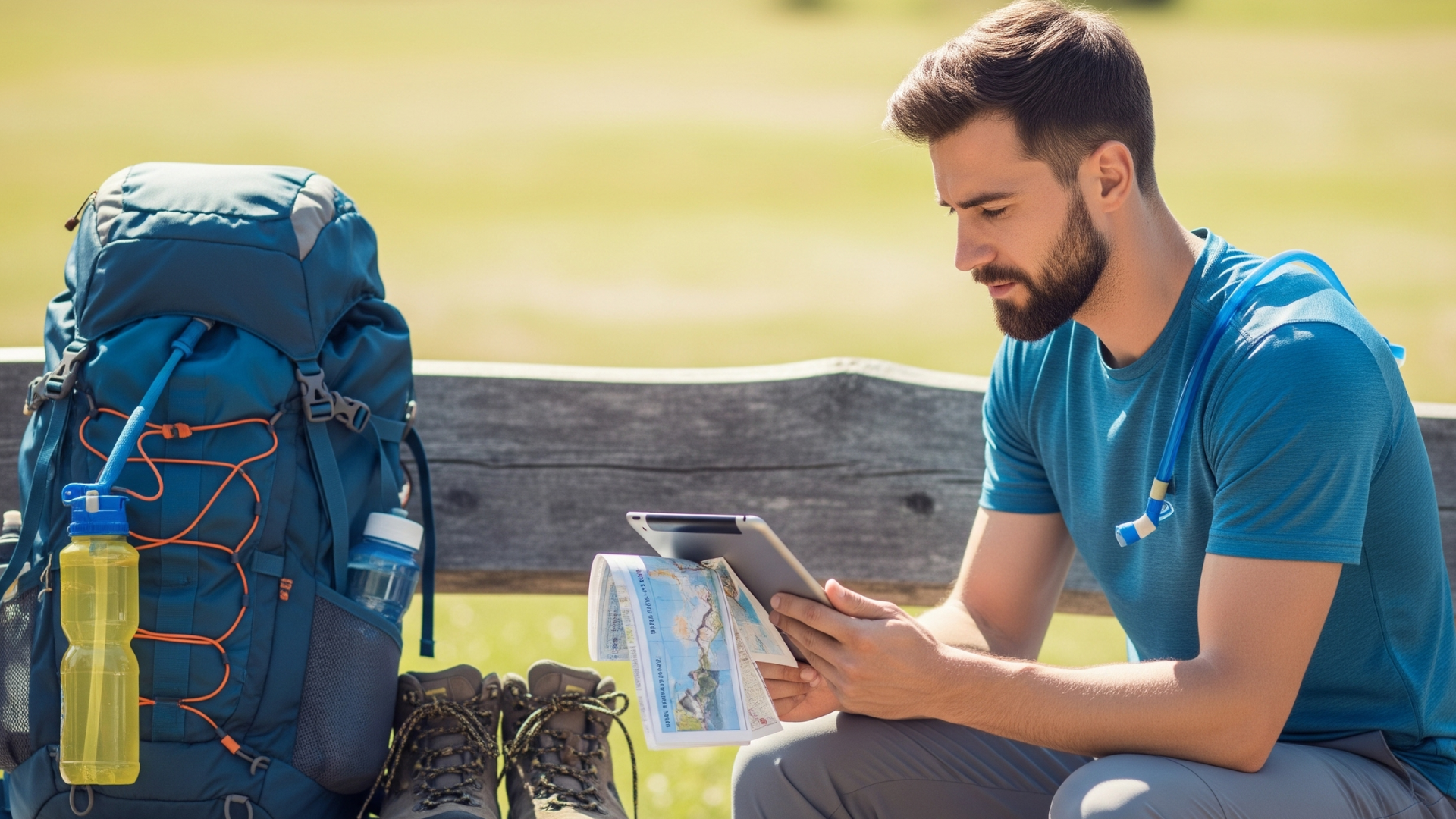
Making a hydration plan is important if you want to stay hydrated and enjoy your outdoor activities. Planning how to stay hydrated is important before, during, and after your outdoor activities. It makes sure that you stay properly hydrated.
Strategies for Hydration Before an Activity
Before you go outside, you should make sure your body is properly hydrated. First, drink at least 16 to 20 ounces of water two to three hours before you do something. This lets your body take in the water and keeps you from getting thirsty on your trip.
During-Activity Water Schedules
During your outdoor activity, make sure you drink enough water at regular times. Every 10 to 20 minutes, try to drink 7 to 10 ounces of water. This frequency helps you stay hydrated without putting too much in your stomach.
Techniques for Rehydrating After an Activity
When you’re done with your activity, drink 16 to 24 ounces of water for every pound of body weight you lost. Weigh yourself before and after the activity to see how much weight you lost.
Here is a simple table to help you plan your hydration:
Activity Phase | Hydration Guideline |
Pre-Activity | Drink 16-20 ounces 2-3 hours before |
During Activity | Drink 7-10 ounces every 10-20 minutes |
Post-Activity | Rehydrate 16-24 ounces per pound lost |
By using these tips for planning your hydration, you can make sure that your time outside is safe and fun. Remember that staying hydrated is important for your health and performance when you’re outside.
How Much Water Should You Bring on Different Trips?
It’s important to know how much water to bring on a day hike or a backpacking trip. It depends on what you’re doing and how long you’ll be out.
Water Calculation Formula for Day Hikes
Simple maths can help you plan day hikes. Every hour you hike in mild weather, bring at least half a litre of water. Change this based on how active you are and the weather.
To give you an idea, a 4-hour hike might need 2 litres of water. You may need more if it’s hot or if you’re hiking a lot.
Multi-Day Backpacking: How Much Water Do You Need Each Day?
When you go backpacking for more than one day, you should figure out how much water you will need each day. You will need water to prepare food, drink, and clean yourself. Aim to drink one to two litres of water every day, plus extra for other uses.
- One to two litres of water a day
- Extra 1-2 litres per day for cooking and hygiene
Other things to do outside, like climbing, biking, and more
Different outdoor activities require different amounts of water. For instance, cycling might need more water because it’s so hard. People who climb might need water during breaks.
On a bike ride, a hydration pack can make it easier to drink. As you climb, take breaks to drink water to stay hydrated.
How to Choose the Right Hydration Gear
Getting the right water gear is important for having fun outside. Having the right gear can make you more comfortable and enjoy your time. Making the right choice for your task is the most important thing.
The pros and cons of water bottles vs. hydration bladders
People are still arguing about whether water bottles or hydration bladders are better. The water bottle is simple and simple to clean. Plus, they don’t leak as often and work well in cold weather.
You can drink with a hydration bladder instead of using your hands. They’re great for long trips like biking or hiking.
When deciding between the two, here are some important things to keep in mind:
- Simple to clean and take care of
- Less chance of leaks
- Easy to check the water level
- For hands-free use
- More convenient for activities that go on all the time
- Less bulky to carry in a rucksack
The Best Water Bladders for a Range of Activities
There are different kinds of bladders for different uses. Choose based on size, material, and how easy it is to use.
Tips on Durability and Upkeep
Clean your hydration bladder often to keep it in good shape. Soft soap and a soft brush are what you need. Often look for signs of wear and tear.
Cleaning and stopping the growth of bacteria
It’s good for your health to keep your bladder clean. After each use, dry it well. To store things, use a cleaning kit or a vinegar solution.
New ways to stay hydrated for outdoor use
There are always new ideas in the outdoor business. There are hydration packs with filters, smart systems, and bladders that can be folded up.
When you choose hydration gear, think about what you need and what you’re doing. Your trip outside can be better if you make the right choice. It keeps you hydrated and alert.
How to Find and Clean Water in the Wild
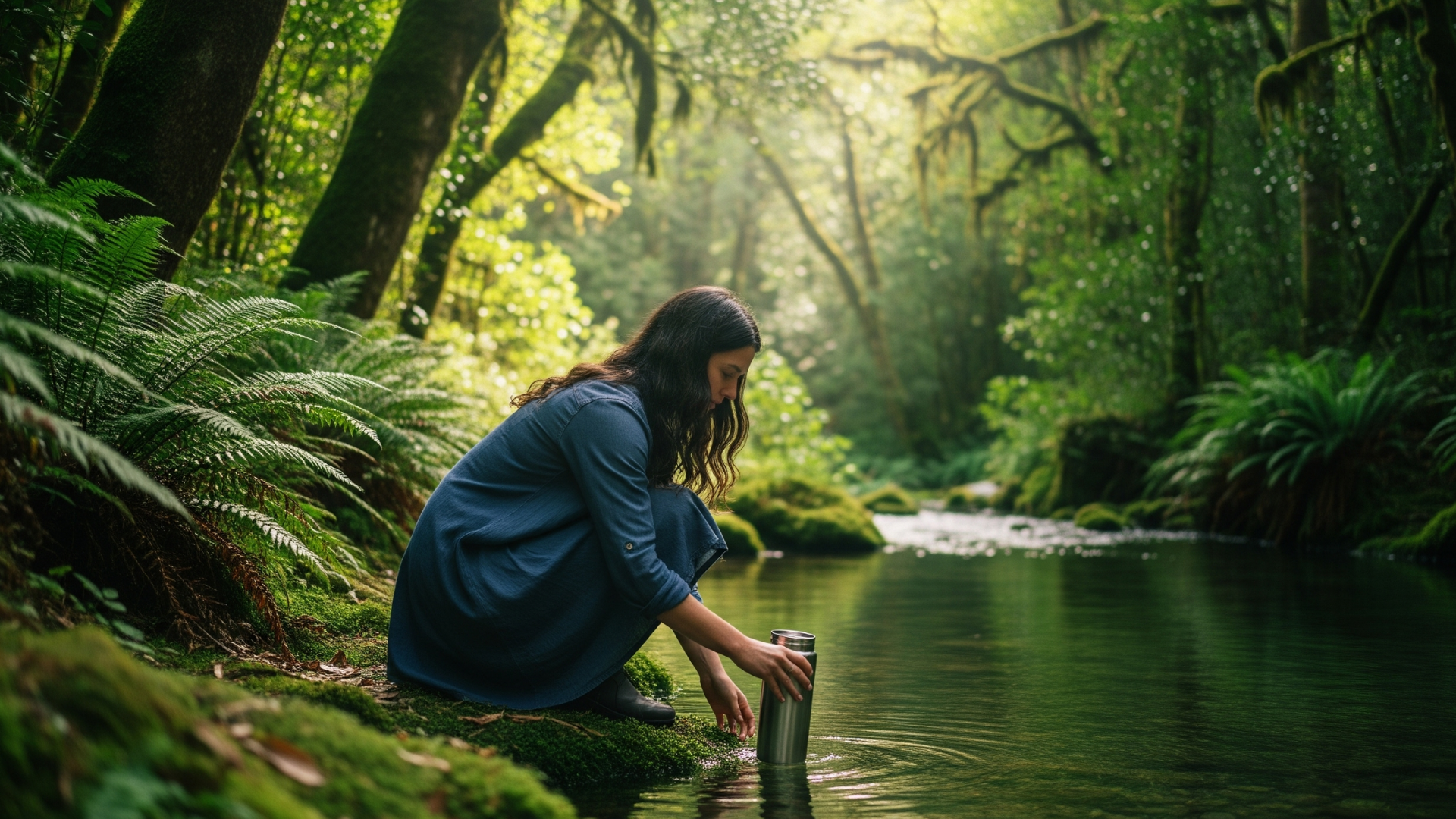
Outdoorsy people need to know how to find clean water to drink in the wild. Being able to find clean water sources in the wild can save your life when you’re not at home.
Finding Natural Water Sources That Are Safe
Not every body of water is safe. Look for places with lots of plants or animals. There is often water in these places. But make sure the water is safe to drink before you drink it.
When you check a water source, think about these things:
- Does it get dirty from things like farm runoff or animal waste?
- What kinds of living things are there?
- Is the water colourless and clear?
Different ways to filter water for use outside
You need to clean the water once you find it. Depending on what you have and what you need to do, there are many ways to do this.
Filters and purifiers for portable water
Portable filters and purifiers can get rid of germs and viruses that are bad for you. Here are some top picks:
- Small Sawyer Water Filter: It’s small but works really well.
- LifeStraw Water Filter for Individuals: Dangerous pathogens can’t get to you.
Chemical Methods for Treatment
Chlorine or iodine tablets can also be used to clean water. They’re small and easy to use, but the water taste might change.
Method | Effectiveness | Ease of Use |
Portable Filters | High | Easy |
Chemical Treatment | High | Moderate |
Emergency Water Collection Techniques
In survival situations, knowing how to get water is vital. You can:
- Collect dew or rainwater
- Make a solar oven to get water from plants or mud
You will stay safe and hydrated if you know how to find and clean water in the wild. You need these skills to have a great trip outside, whether you’re hiking, camping, or backpacking.
More than just water: electrolytes and better hydration
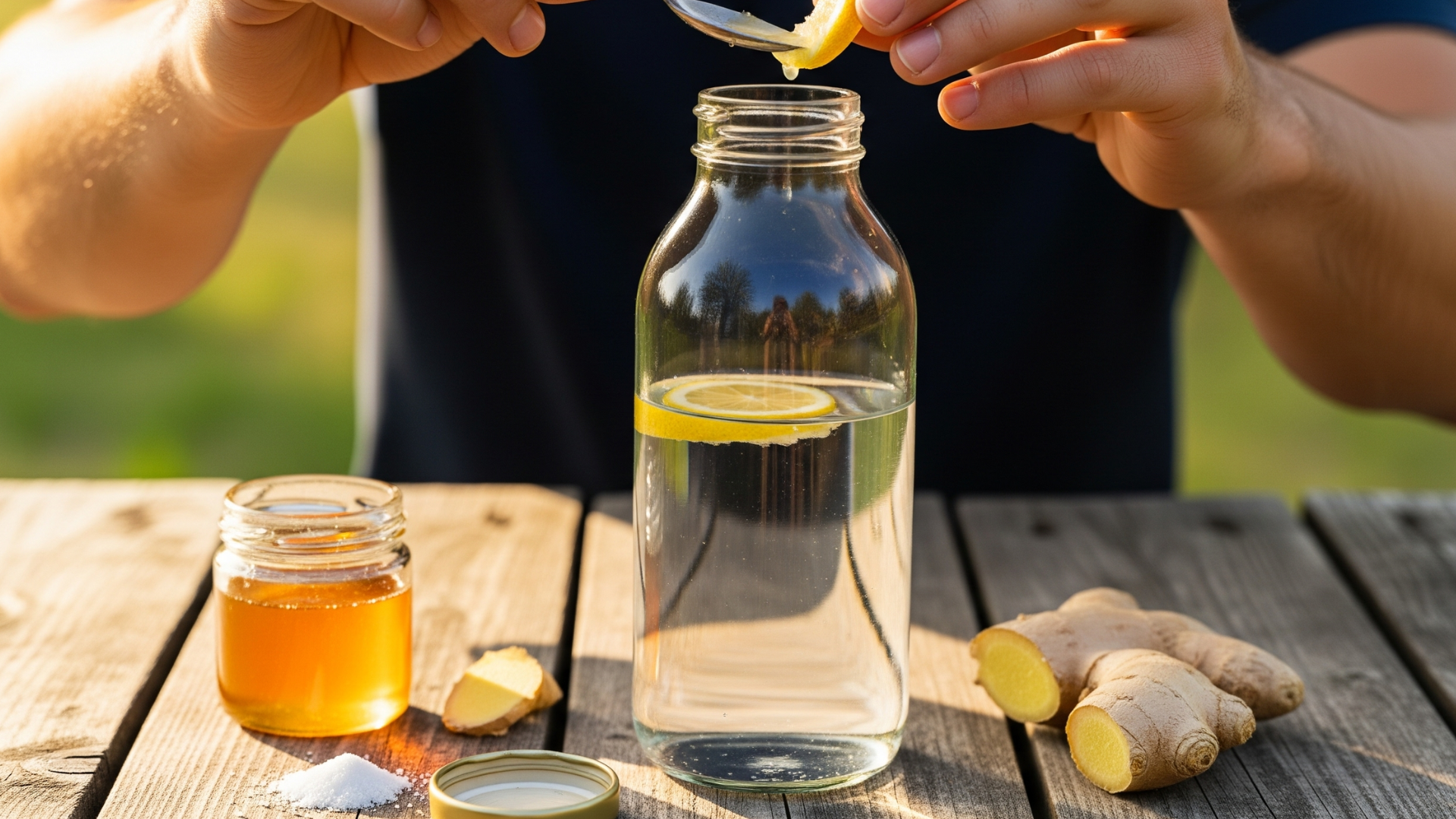
Electrolytes are very important for people who like to do things outside. Elemental electrolytes help you stay energised and strong.
How Electrolyte Loss Happens During Outdoor Activities
You sweat and lose electrolytes when you’re outside doing a lot of things. Calcium, potassium, and sodium are some of these. Your muscles and nerves need them. Figuring out how much water you lose can help you drink more.
Options for replacing electrolytes: natural vs. commercial
You can get back electrolytes in a lot of different ways. You can use tablets or drinks that are already made. You could also try natural foods like bananas, coconut water, and salted nuts. It depends on what you need and what you like that each has its own pros.
How to Stay Hydrated Without Spending a Lot of Money
Crafting your own hydration mix can help you save cash and meet your needs. One easy way to get electrolytes is to mix some salt and lemon into water. Add honey and ginger for extra health benefits.
To stay more hydrated, you can learn about how electrolytes are lost and try different ways to replace them. This helps you do better when you’re outside.
Problems and Solutions with Seasonal Hydration
What you need to do to stay hydrated outside changes with the seasons. When you’re doing things outside, staying hydrated is important for both performance and safety. To stay healthy and avoid dehydration, each season has its own specific needs.
Keeping yourself from getting dehydrated and sick in the summer heat
Since it’s hotter and you sweat more in the summer, you are more likely to become dehydrated. Do not wait until you are thirsty to drink water. Use this tip to stay hydrated. Your urine should be pale yellow if you’re drinking enough. Replacement salts can be found in electrolyte drinks.
How to Stay Hydrated in Cold Weather: An Unseen Problem
People often forget to drink water when it’s cold because they don’t feel as thirsty. As we breathe, though, cold air can make us lose water. Don’t forget to drink a lot of water when you’re doing winter sports like skiing or snowshoeing.
In rainy weather, how to stay hydrated when you’re surrounded by water
For some reason, it’s easier to forget to drink water when it’s raining. However, working out can cause you to lose a lot of water. Make sure you get enough water and wear clothes that let air pass through so you don’t sweat too much.
If you know about and deal with these seasonal water problems, you can stay hydrated and safely enjoy outdoor activities.
Five important tips for new outdoor enthusiasts on how to stay hydrated
Adventures in the great outdoors are fun, but they can get tough if you don’t have enough water. When you first start, it’s important to learn how to drink enough water. This makes sure that the experience is safe and fun. Here are five important tips to help you stay hydrated when you’re outside.
Drink water before you even feel thirsty
It is important to drink water before you feel thirsty. It keeps the right amount of water in your body, so you stay hydrated all day. At least 16 ounces of water should be drunk one to two hours before your trip.
Learn how to read your body’s signs that it needs water
When your body needs water, it lets you know. If you feel tired, dizzy, or like your mouth is dry, you should be careful. You need to drink more water if you notice any of these.
Make a regular schedule for drinking
Set a time to drink water every day. Every 20 to 30 minutes, try to drink some water. This helps you stay just the right amount of hydration.
Water and good nutrition should be balanced
You need more than just water to stay alive. Electricity is also important. Eat foods or take supplements that are high in electrolytes. This helps your body stay straight.
Manage water in a responsible way
When you’re outside, be careful with your water. If you can, use filters or other ways to clean the water. Also, don’t waste water. This makes sure you have enough for the trip.
Hydration Tip | Description | Benefit |
Pre-hydration | Drink water before feeling thirsty | Maintains fluid balance |
Reading body signals | Pay attention to dehydration symptoms | Early detection of dehydration |
Drinking schedule | Drink water at regular intervals | Maintains optimal hydration |
How to Spot and Handle Hydration Emergencies
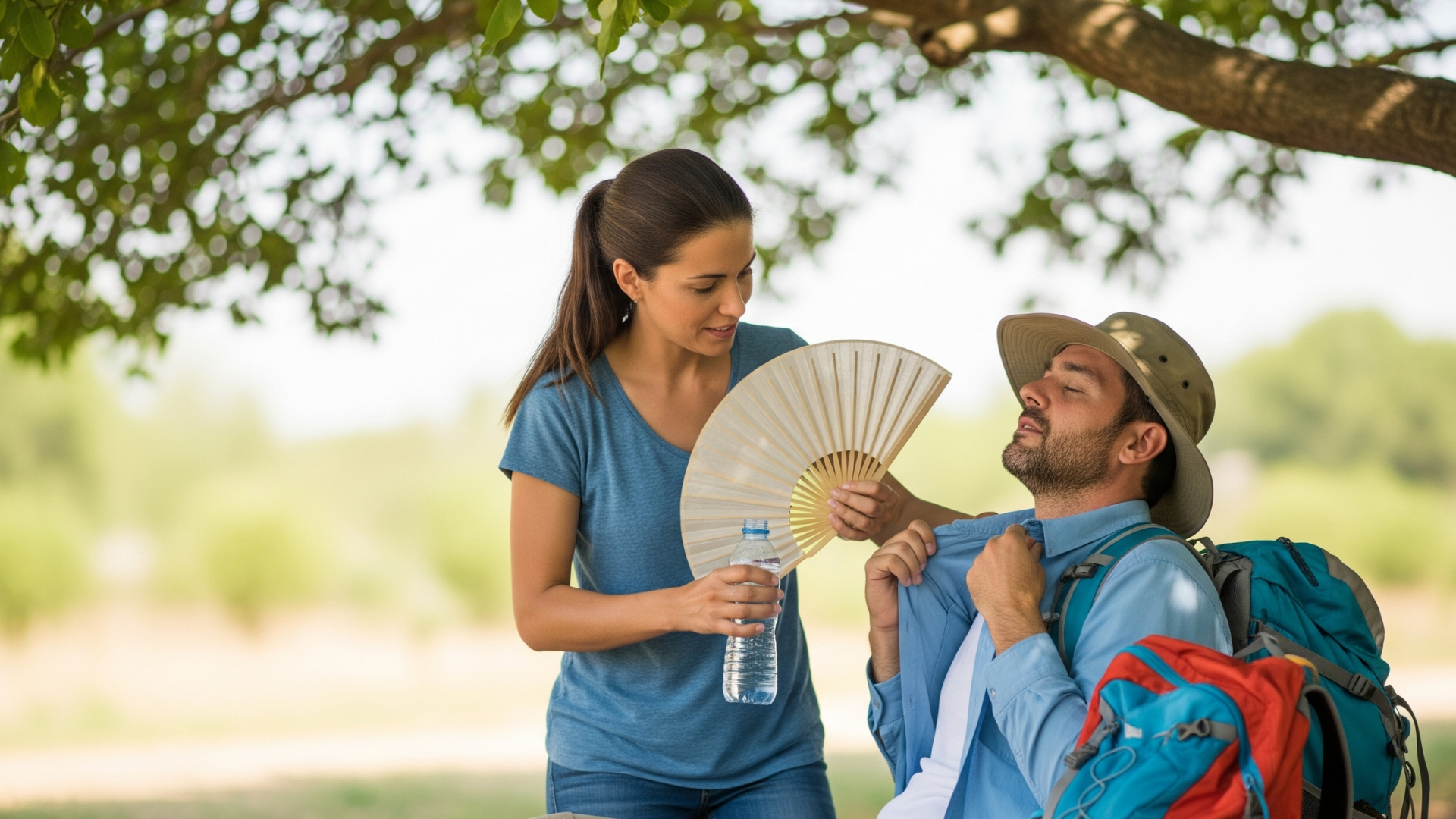
Anytime you’re outside, you can become dehydrated. It’s important to know how to find and combat it. Even if you drink a lot, dehydration can still happen.
Symptoms of being thirsty: From Not Bad to Very Bad
Symptoms of dehydration range from mild to severe. Some of the first signs are dry mouth, tiredness, and feeling dizzy. Symptoms that get worse may include a fast heartbeat, sunken eyes, and less urine.
Dehydration can lead to confusion, passing out, and even organ failure in the worst situations.
Help for People Who Are Dehydrated in Remote Areas
Fast action is needed if dehydration strikes. Put down what you’re doing and take a break in a cool, shady place. Afterward, drink water or something that has electrolytes in it.
If you are really thirsty, get some shade, take off extra clothes, and cool off with wet cloths.
What to Do to Get Medical Help
Knowing when to call for medical help is important. As soon as you drink water, get help if your symptoms don’t get better or get worse. Also, get medical help right away if your symptoms are very bad, like feeling confused, passing out, or having terrible stomach pain.
Being ready for what to do if you get thirsty outside can keep you safer. Learn as much as you can, drink plenty of water, and have fun on your adventures.
Conclusion
Keeping yourself hydrated for the best outdoor performance.
Outdoor lovers need to make sure they stay hydrated. After reading this article, you’ll be ready to do fun and safe things outside. Have fun on your adventures and remember to stay hydrated.
For outdoor success, you need to plan how to stay hydrated and have the right gear. Stay hydrated while you’re hiking, biking, or climbing. When you do it, you do your best.
Use these tips to get more out of your time outside. Please take out your water bottle or hydration bladder. You’re now ready to go on your next outdoor adventure.
